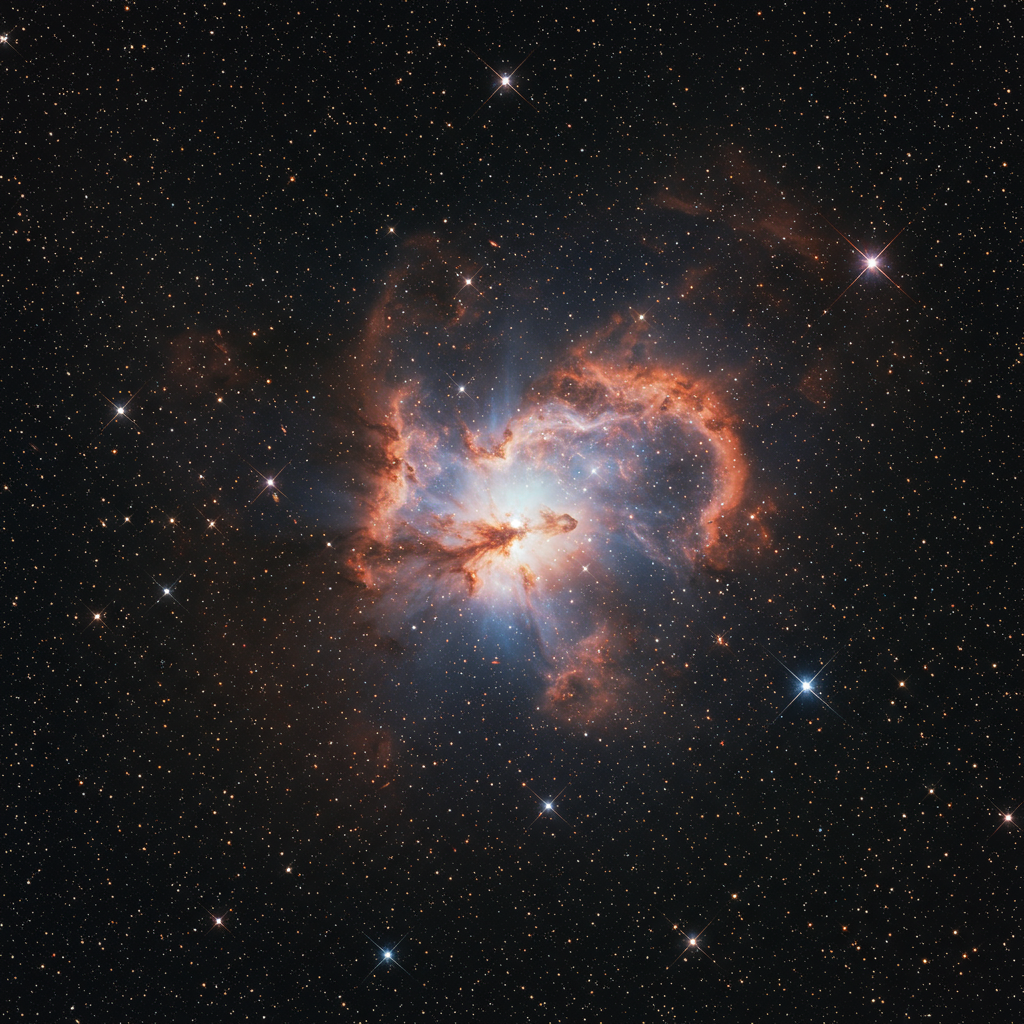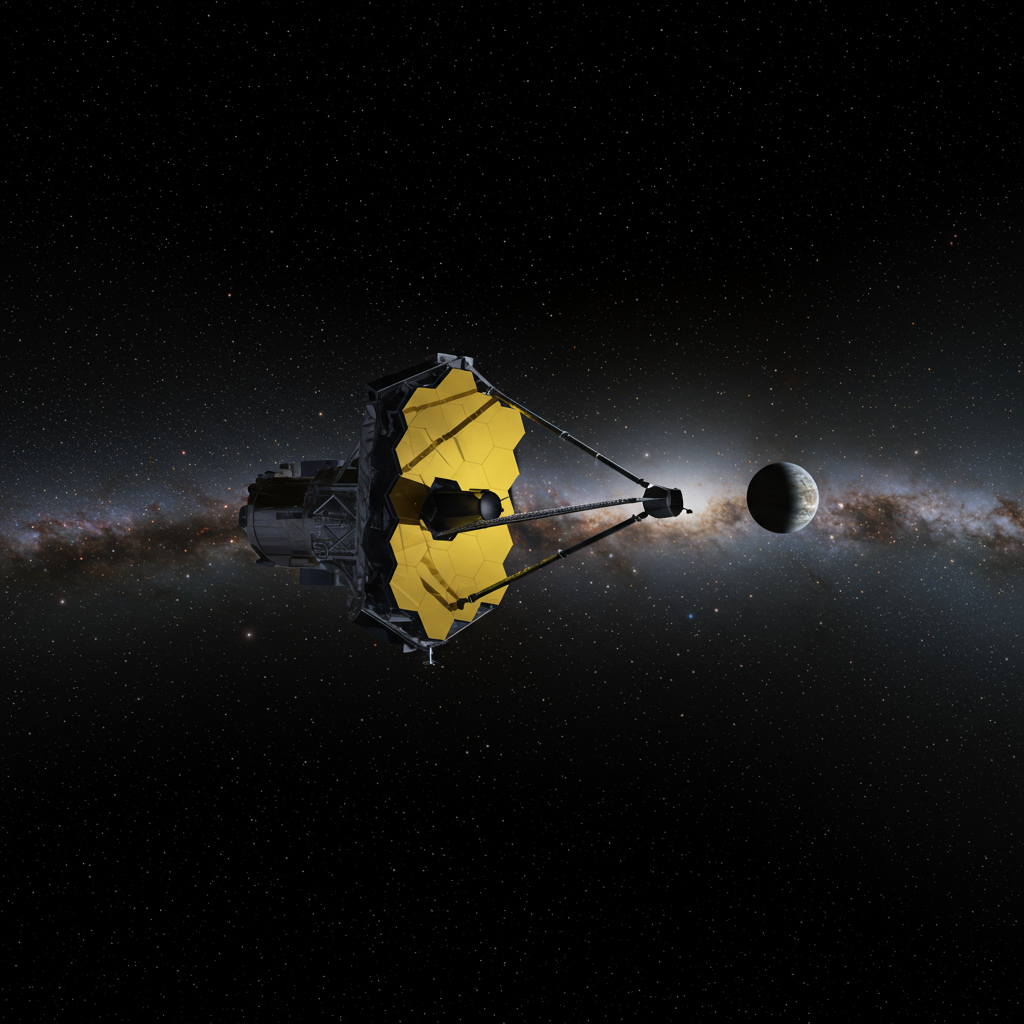The cosmos is revealing its secrets in stunning new detail, thanks to humanity’s latest eye on the sky. The Vera C. rubin observatory in Chile has just unveiled its eagerly awaited first images. These initial views showcase the universe with unprecedented clarity. They offer a dazzling preview of the discoveries to come. This new facility promises to transform our understanding of the dynamic night sky.
Located high on Cerro Pachón in the Chilean Andes, the Rubin Observatory is a monumental achievement. It represents over two decades of international investment and planning, primarily funded by the U.S. National Science Foundation (NSF) and Department of Energy (DOE). The site was chosen specifically for its exceptional dark skies and stable, dry air. This provides ideal conditions for cutting-edge astronomical observation.
A Camera Like No Other
At the heart of the Rubin Observatory is its revolutionary LSST Camera. This isn’t just any camera; it’s the largest digital camera ever built. It boasts a staggering 3.2-gigapixel sensor. For perspective, this car-sized instrument holds a Guinness World Record. Displaying a single Rubin image at full resolution is a challenge. Even massive screens like The Sphere in Las Vegas aren’t large enough. It would require around 400 ultra-high definition TVs to show one image completely.
This immense scale allows the camera to capture a vast swath of the sky in a single exposure. Combined with the observatory’s powerful 8.4-meter Simonyi Survey Telescope, it gathers an enormous amount of light. This enables astronomers to observe incredibly faint and distant objects. Seeing distant objects in astronomy means looking back in time. The Rubin Observatory is essentially building a cosmic time machine.
The First Glimpses: Nebulae and Galaxies
The debut images from Rubin are truly breathtaking. One remarkable composite image showcases the iconic Trifid and Lagoon Nebulae. These stellar nurseries lie thousands of light-years away within our own Milky Way galaxy. The image combines data from 678 exposures taken over just 7.2 hours. It was compiled from about two trillion pixels of raw data. This unprecedented detail highlights gas and dust clouds that were previously difficult to see. It makes faint features clearly visible, offering new insights into how stars are born.
Another stunning release provides a sweeping view of the Virgo Cluster. This is a massive collection of galaxies located about 53.8 million light-years away. A single, initial full image from this region contains roughly 10 million galaxies alone. This density underscores the telescope’s incredible field of view and resolution. The images capture a wide variety of celestial bodies, from bright stars and nearby spiral galaxies to distant, faint galaxy groups. A release video, described as a “cosmic treasure chest,” starts close on two galaxies before zooming out to reveal millions more.
The Legacy Survey of Space and Time (LSST)
These initial images are just the beginning. Later this year, the Rubin Observatory will commence its primary mission: the Legacy Survey of Space and Time (LSST). This ambitious project will run for 10 years. The observatory will repeatedly scan the entire southern night sky every three to four nights. This systematic, rapid surveying is unlike anything done before.
The goal is to create the most comprehensive map of the dynamic universe. Instead of static snapshots, LSST will build a “cosmic movie.” This adds a crucial “time dimension” to astronomical observation. While the universe seems unchanging to human eyes, it is filled with events that occur over various timescales. The LSST will capture roughly 800 images for every position in the southern sky. Some areas will receive tenfold more observations. This allows astronomers to track subtle changes with unmatched precision.
Unlocking the Universe’s Deepest Mysteries
The vast dataset generated by LSST, projected to reach 500 petabytes and include around 10 billion stars and galaxies, has profound scientific goals. A major focus is understanding the “dark universe.” Dark matter and dark energy make up about 95% of the cosmos. Yet, their nature remains largely unknown.
By layering millions of images of the same sky patches, Rubin will reveal extremely dim and distant objects. This data will help astronomers map the distribution of dark matter. It will also provide clues about how this invisible substance evolves over cosmic time. LSST will also monitor millions of exploding stars, particularly Type Ia supernovae. These act as “standard candles” for measuring vast cosmic distances. Tracking these supernovae will help refine measurements of the universe’s expansion rate. This is key to understanding the mysterious dark energy driving this expansion.
Revealing the Dynamic Sky
Rubin’s speed and repeat observations make it exceptionally good at finding “transients.” These are celestial objects that change in brightness or position over time. The survey is expected to detect over 100 million variable stars. It will also capture millions of stars undergoing supernova explosions. Beyond stellar events, Rubin can spot stars being tidally disrupted by black holes. It can even detect the electromagnetic signatures from merging stars, complementing gravitational wave observations.
When Rubin detects a change in the sky, an alert system notifies astronomers globally in near real-time. This allows for rapid follow-up observations with other telescopes. This capability is poised to revolutionize the study of transient phenomena.
Guardians of the Solar System
Beyond cosmology, Rubin is a powerful tool for studying our own solar system. Its ability to quickly scan large areas of the sky makes it perfect for finding moving objects. In just 10 hours of early observation time, Rubin discovered 2,104 previously undetected asteroids. This included seven near-Earth objects, none of which posed a threat. This discovery rate is remarkably efficient. It outpaces the discovery rate of almost all other observatories combined.
Over its decade-long mission, LSST aims to discover and catalogue around 90,000 new near-Earth asteroids. This would more than double the currently known number. This capability is crucial for identifying potentially hazardous asteroids. Providing advance warning is a key aspect of planetary defense efforts. Rubin will also be the most effective instrument for spotting interstellar objects passing through our solar system. It will even contribute to the search for the hypothetical Planet Nine far beyond Neptune.
Engagement and Accessibility
The Vera C. Rubin Observatory is committed to making its data accessible. The team has developed a “Sky Viewer” app. This tool allows the public to explore the initial images and data. It even includes a unique sonic component. This sonification process translates astronomical data into sounds. Different pitches and tones represent star brightness, color, or galaxy characteristics. This makes the data accessible to visually impaired individuals. It also offers everyone a new way to interact with the cosmos.
The observatory website provides educational resources for teachers and students. It also explains how the public can get involved through citizen science projects. The data policy ensures immediate access for scientists in the U.S. and Chile. Worldwide public release follows after two years. However, alerts about changing objects are available globally in real time from the start. This massive dataset is intended as a “legacy data set for humanity.” It captures the state of the sky before increasing satellite numbers might alter observations.
The Promise of the Unexpected
While LSST has specific scientific goals, researchers express excitement about the unforeseen. Dr. Federica Bianco, deputy project scientist, hopes the observatory will uncover something entirely unexpected. Perhaps a phenomenon that doesn’t fit current physics models. Discoveries that challenge our understanding could lead to significant advancements in knowledge. The Rubin Observatory is designed not just to answer known questions but to reveal new ones we haven’t even thought to ask. The commencement of the full LSST over the coming months marks the start of a decade of potential groundbreaking discoveries.
Frequently Asked Questions
What is the Vera C. Rubin Observatory’s main mission or goal?
The primary mission is the 10-year Legacy Survey of Space and Time (LSST). This project will create a dynamic, multi-color movie of the southern sky. It scans the entire region every few nights. The goal is to detect everything that changes or moves. This includes transient events like supernovae, variable stars, and asteroids. It also aims to map dark matter and study dark energy.
What makes the Vera C. Rubin Observatory’s camera unique?
The LSST Camera is the world’s largest digital camera, with a 3.2-gigapixel sensor. It is roughly the size of a small car. This massive scale allows it to capture an extremely wide field of view with high resolution in a single image. It can collect light from very faint, distant objects. This enables astronomers to see fine details and observe the universe as it was billions of years ago.
How will the Rubin Observatory’s data be used by scientists and the public?
The observatory will produce an enormous dataset. This data will be used by scientists globally to study cosmology, transient events, and solar system objects. Real-time alerts about changes will be shared with astronomers worldwide. The data is intended as a legacy for humanity. Resources like the Sky Viewer app and educational materials are available for the public. Citizen science opportunities also allow public participation in the discovery process.
Conclusion
The release of the first images from the Vera C. Rubin Observatory marks a new era for astronomy. This groundbreaking facility, with its unparalleled camera and ambitious 10-year survey, is set to provide the most dynamic view of the cosmos ever created. From mapping the mysterious dark universe to cataloging hazardous asteroids and spotting exploding stars, Rubin will generate a wealth of data that will fuel discoveries for decades. As the Legacy Survey of Space and Time begins, the world watches, eagerly anticipating the cosmic wonders it will reveal.
Word Count Check: ~1180 words




